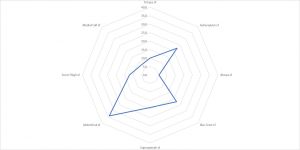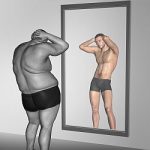Body Fat is an area which is highly focussed on by people, media, the medical profession and a number of sports, but is only one part of the overall measurement of body composition or body fat percentage.
Although we all talk about it, what is it really? How is it measured? What do all the figures mean? These are some of the questions often asked; there are a number of ways of coming up with a body fat percentage such as underwater weighing, BMI skinfold measurements, bio-impedance analysis, air displacement and Dexa. All these are useful tools and it is not the focus of this piece to debate the pros and cons of each individual test but in my experience, these tests are not always conducted correctly so the results become unreliable, i.e. I often see people using impedance machines after exercise, which will cause an over estimation in % body fat as the body is dehydrated and the electrical current can assume dehydrated muscle is fat, as fat impedes the current due to its low water content. Therefore, it’s important that the person is qualified to supervise the test and that the individuals or athletes have been informed of the testing protocol beforehand.
Wouldn’t it be advantageous to know exactly how much fat your body has stored and how simple it is to facilitate change?
This is why the International Society for the Advancement of Cineanthropometry (ISAK – http://www.isak.global/) acts as the body who oversee the internationally accepted protocol for the taking of skinfold measurements. However, even when the test is done correctly results can be distorted depending on the formula used to interpret the data. I recently conducted testing on an athlete who using one formula had a body fat percentage of 14% and on another formula had a body fat of 7.5%. This is why the standard recommendation now is to go with the sum of skinfolds, once you have a baseline then we know if the sum increases, body fat is increasing and if it goes down body fat is going down. The tester can then use research to come up with acceptable parameters as the required range.
The image below is a sample of data taken recently from a skin fold assessment to give the client an indepth understanding of areas thier body likes to store fat.

In closing if you want reliable and consistent results, it is important that these types of tests are conducted using the proper testing protocols with qualified practitioners would are able to interpret the results according to the needs of the individual.
Contact us if you would like more information relating this topic or nutrition in general on 01245 690520 or send us an email info@fayepattison.com to arrange a free telephone consultation with myself to see how I can help you.
Author – David Dixon, Specialist Performance Nutritionist.
Faye Pattinson
Average rating: 0 reviews






